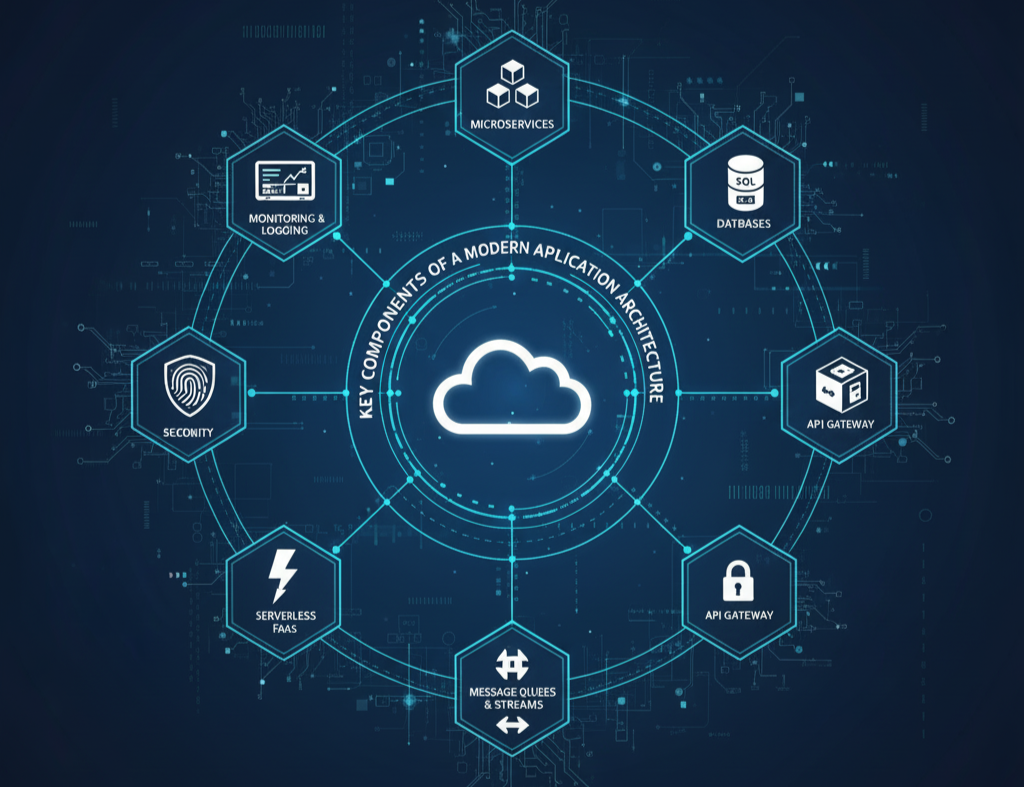Speed, scalability and innovation are the major elements of cloud-based applications that modern businesses depend on. Modern cloud application architecture is designed to support real-time workloads, complex workloads, and changing business requirements. It is flexible and efficient at the same time, and the applications are safe, reliable, and simple to scale.
It is time to take a look at the main elements that constitute a solid cloud application architecture.
1. Microservices Architecture
Rather than creating a single large application, contemporary systems are subdivided into small and autonomous service units known as microservices. Every microservice is engaged in a particular task – authentication, data processing, user management, etc. This way, updating, scaling and releasing features of the application becomes easier without impacting the whole application.
2. Application Programming Interfaces (APIs)
The connections between microservices, applications, and external systems are the APIs. They enable various elements to interact freely and provide data safety. RESTful and GraphQL APIs are the most frequently used in making sure that there is effective communication between cloud services.
3. Containerization and Orchestration.
Applications and dependencies are bundled together in lightweight, portable units called containers. There is easy portability of these containers such as Docker which can be used in any place be it a local computer or a cloud server. Kubernetes has been popular in orchestration to automate deployment, scaling and management of applications implemented using containers.
4. Data Storage and Management
Every application is centered around data. There are a number of storage solutions deployed in cloud architecture relational databases such as MySQL to NoSQL databases such as MongoDB and unstructured data lakes. Managed cloud databases are useful in maintaining scalability, high availability and automated backups.
5. Serverless Computing
Serverless technology enables programmers to execute code without server administration. Services such as AWS Lambda or Google Cloud Functions will automatically scale resources according to demand. This minimizes the overheads of operation and makes usage cost efficient in applications where workload is variational.
6. Security Management and Identity Management.
Cloud architecture of security is an important aspect. In modern systems encryption, firewalls and multi-factor authentication are used to safeguard the information and applications. Identity and Access Management (IAM) makes sure that sensitive resources are accessed by the authorized users and services.
7. DevOps and Continuous Integration/Continuous Deployment (CI/CD).
DevOps practices enable quicker release, testing and building of applications by teams. CI/CD pipelines help to make the delivery of software automatic so that updates are received by customers promptly and without fail. This enhances quality of products and minimizes down time and man error.
8. Observability and Monitoring.
The performance of applications, usage of the resources and user activity are monitored using the available monitoring tools. The logs, metrics and alerts aid the developer to observe and correct the errors in a timely manner. Observability platforms are more insightful, which makes them a seamless experience to end users.
9. Scalability and Load balancing.
Scalability is a feature that would ensure the applications can cope with any sudden increases in demand. The load balancers allocate traffic using equal distribution among various servers to ensure speediness and reliability. Cloud providers have auto-scaling functionality that scales dynamically.
Conclusion
The current cloud application architecture is a mixture of flexibility, performance, and security. With microservices, APIs, containers and automation, companies can create applications that expand as they scale their needs. With the ever-evolving cloud technology, companies such as tech.us are assisting organizations to create scalable and architecture-ready in the future, which provide high performance and resilience in a networked world.
A modern cloud application architecture is a blend of flexibility, performance, and security. By using microservices, APIs, containers, and automation, businesses can build applications that grow with their needs. As cloud technology continues to evolve, companies like tech.us are helping organizations design scalable, future-ready architectures that deliver high performance and resilience in a connected world.
In the coming years, the focus will shift even more toward intelligent automation and AI-driven optimization. Cloud-native systems will become smarter, self-healing, and more adaptive to changing workloads. Organizations that embrace this shift early will gain a competitive edge in speed, efficiency, and customer experience. The modern cloud is not just an infrastructure, it’s the foundation of digital transformation.


